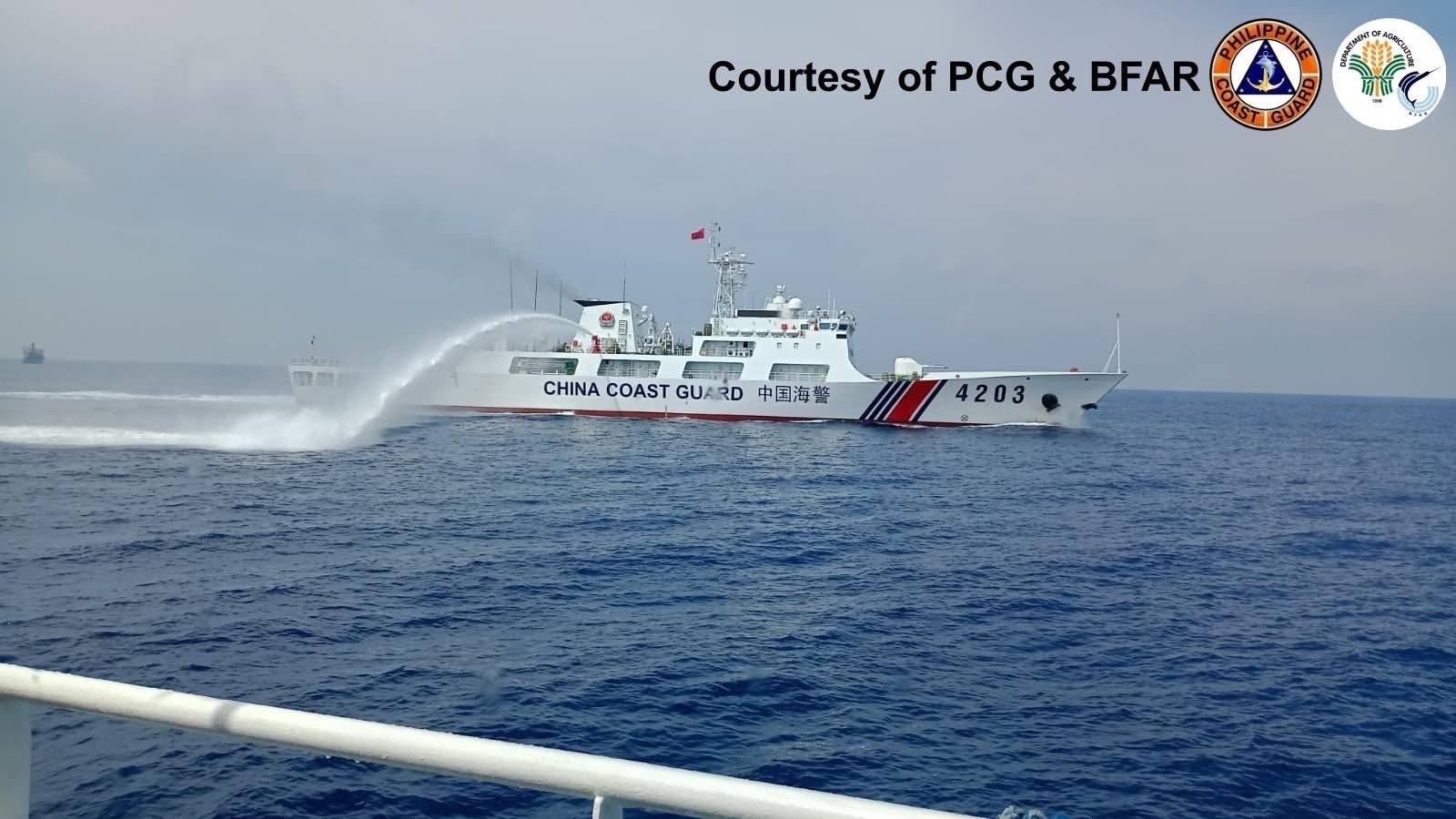China Coast Guard, Navy ships in WPS increasing since Jan

At least 49 Chinese coast guard and Navy ships were detected in Philippine waters in June, the highest number in the Philippine government’s monthly monitoring so far this year.
A Philippine Navy report on Tuesday said vessels of the China Coast Guard (CCG) and People’s Liberation Army-Navy (PLA-N) were seen sailing in and out of Panatag Shoal (Bajo de Masinloc), Ayungin Shoal and Pag-asa Island between June 1 and June 30.
“These 49 ships were not there all the time, but they were in and out of the different features,” Rear Adm. Roy Vincent Trinidad, Navy spokesperson on the West Philippine Sea (WPS), told reporters in Camp Aguinaldo.
The Navy reported China’s increasing deployment of ships to the West Philippine Sea in the last six months—11 in January, 9 in February, 35 in March, 31 in April, 41 in May and then 49 in June.
“As it is right now, we have no direct reference on the tactical implications of why it increased to 49 from last month’s number of 41,” Trinidad said.
Surge
The uptick may be attributed to factors such as weather, deployment cycle, maintenance and repair, he added.
On top of modernizing its armed forces, the Philippines has jointly held maritime drills and patrols, and forged defense cooperation agreements with other countries to counter China’s aggressive expansion in the South China Sea.
In June, nine CCG vessels and 14 PLA-N ships were spotted in Bajo de Masinloc, which lies 230 kilometers (124 nautical miles) west of Zambales, according to Trinidad.
Twelve Coast Guard vessels and two Navy ships were detected in Ayungin Shoal, some 194 km (105 nautical miles) west of Palawan, and nine Coast Guard vessels and three Navy ships near Pag-asa Island, 480 km off southwestern Palawan.
Pag-asa is the only Philippine-occupied island in the Spratly group of islands that is inhabited by civilians.
The surge of Chinese ships came as Filipino and US troops kicked off their seventh joint annual maritime drill in the West Philippine Sea on June 4.
Trinidad said the presence of foreign navies in Philippine waters causes “a short change, a temporary change” in the behavior of the Chinese coast guard.
“The general trend is, after a multilateral maritime cooperative activity with other navies, not only the US, during the conduct of the Multilateral Maritime Cooperative Activity, they are, so to speak, behaved, no coercive and aggressive actions,” he said.
‘Gray zone’ tactics
The Philippines has forged agreements with the United States, Australia, Germany and New Zealand to boost its defense capabilities amid the rising tension in the South China Sea.
It has also ramped up joint patrols and military exercises with Japan, Australia and Canada.
The Marcos administration has adopted a strategy that seeks to expose China’s “gray zone” operations to the international community as much as possible. It mainly involves the immediate reporting and condemnation of harassment incidents within the country’s 370-km (200-nautical-mile) exclusive economic zone.
Data vs disinformation
Meanwhile, Environment Secretary Raphael Lotilla said scientific data, environmental protection measures and other legal tools may help reinforce the 2016 arbitral tribunal ruling that rejected China’s sweeping claims to the South China Sea.
Lotilla said his agency would push for the publication of marine environmental reports, seek stronger interagency coordination and mount grassroots campaigns to counter the spread of disinformation on the WPS issue.
“This landmark legal victory must not be taken for granted—the work is far from over,” he said at a June 23 forum, where legal and scientific experts highlighted the need for the 2016 ruling to be backed by strong domestic law and hard data.
Unified narrative
Fernando Siringan, former director of the UP Marine Science Institute, called for greater investment in coordinated research, habitat mapping and long-term marine protection.
Freddie Gaton, senior state counsel of the Department of Justice, said laws such as the Philippine Maritime Zones Act and Archipelagic Sea Lanes Act help enshrine the 2016 ruling into domestic law.
These measures give the Philippines a stronger legal footing to regulate activities and assert control over its waters, he said.
Gaton agreed with retired Supreme Court Associate Justice Antonio Carpio on the need to develop a unified narrative to counter disinformation and challenge China in the global stage. —WITH A REPORT FROM RENZ PALALIMPA





















